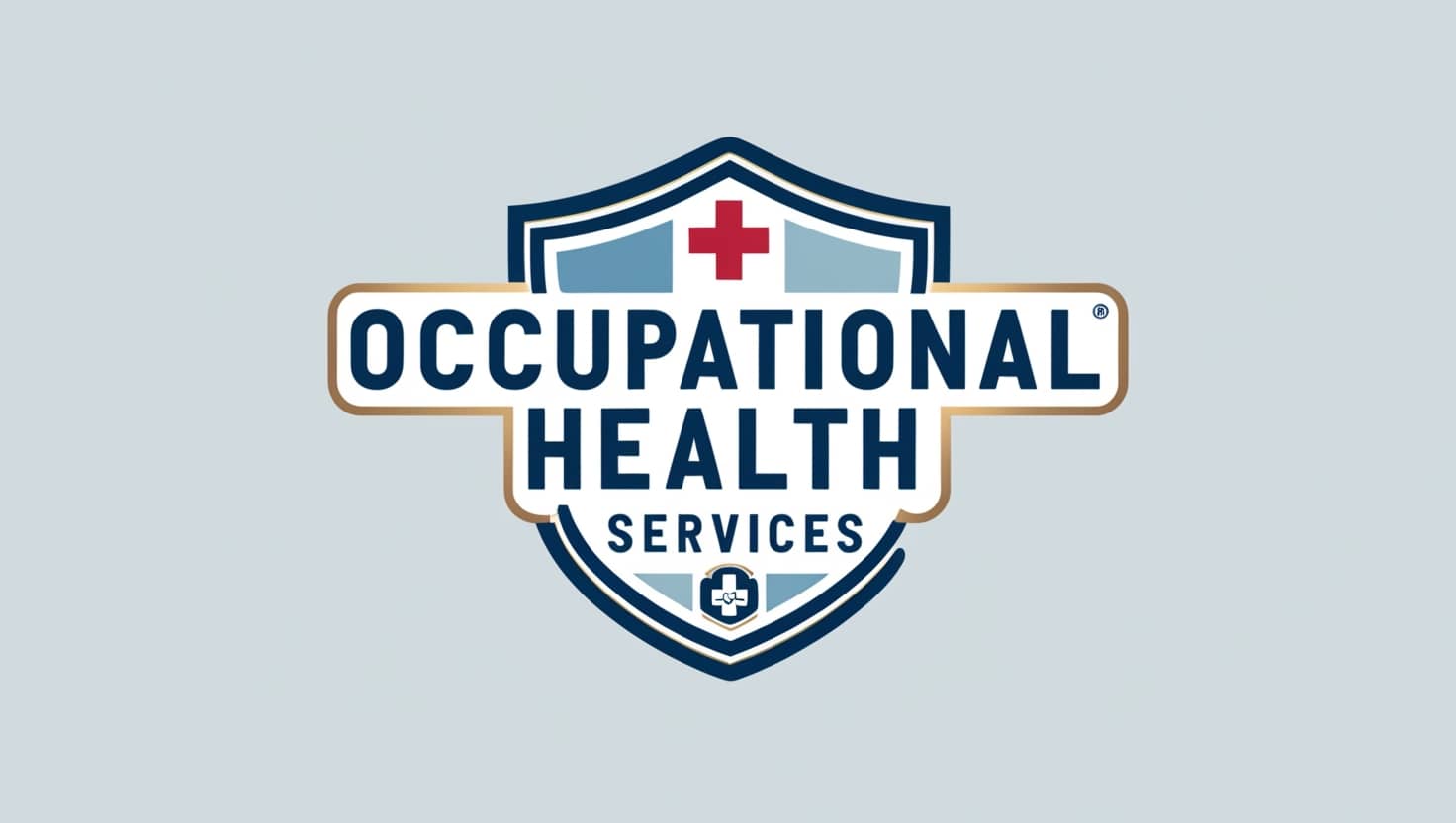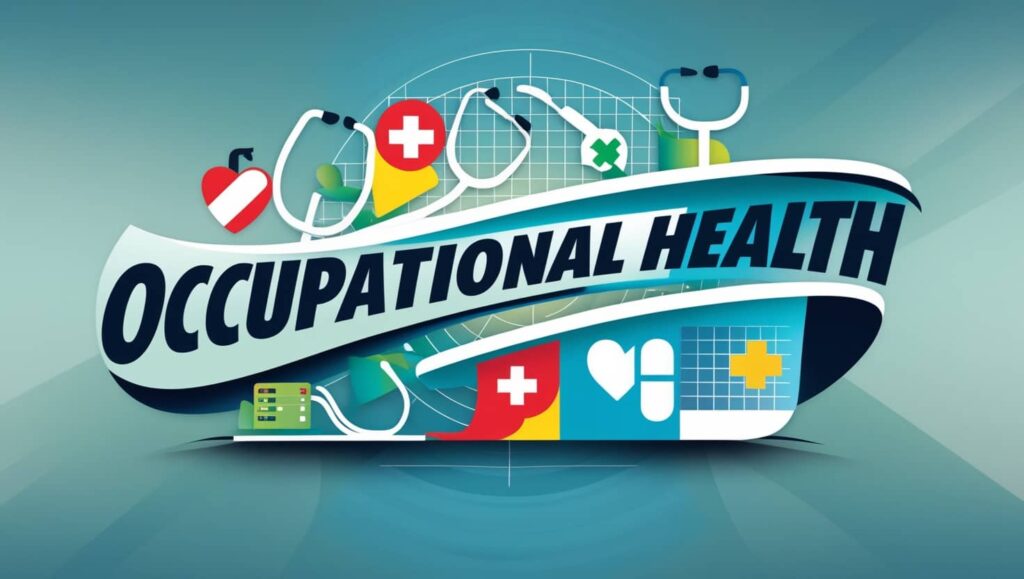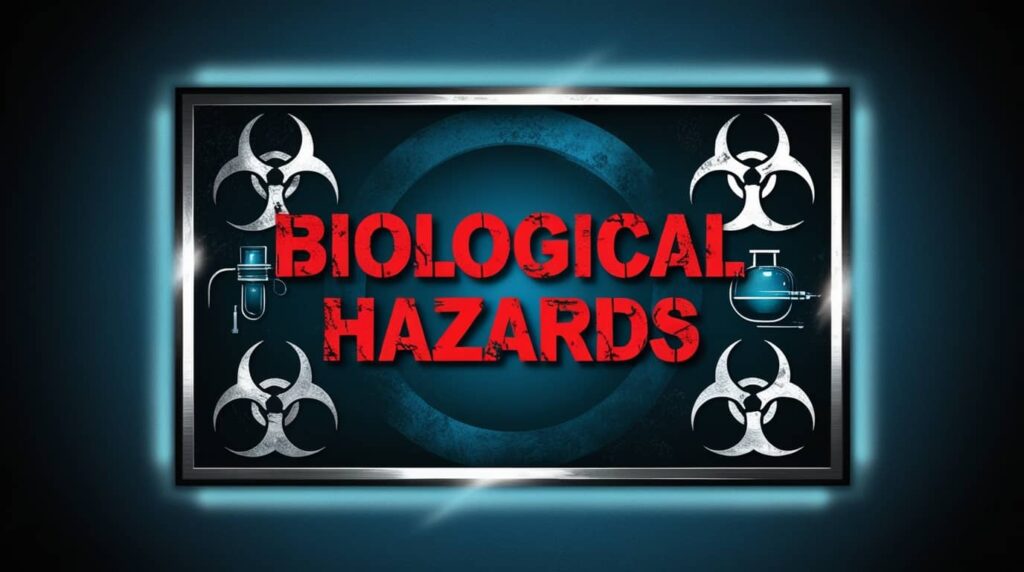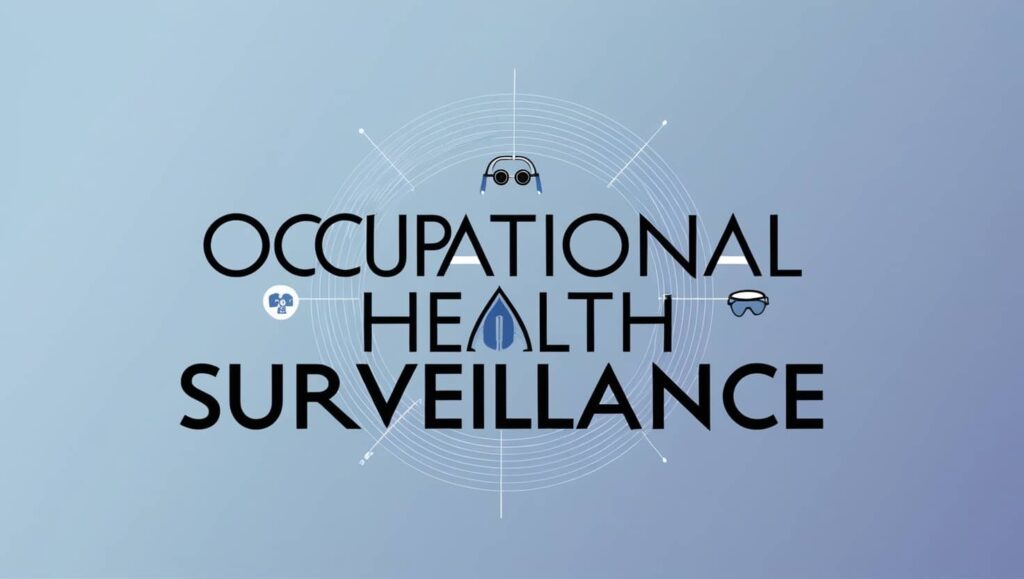Occupational health services are defined as services entrusted with primarily preventative functions and responsible for advising the employer, the employees, and their representatives in the undertaking on the criteria for developing and maintaining a safe and healthy working environment that would facilitate optimal physical and mental health in relation to work and the adaptation of work to the capabilities of workers in light of their state of physical and mental health.
According to international guidelines, including ILO Convention 161, and national legislation, all workers must have access to occupational health services.
Occupational health services should cover all workers in all workplaces, in all sectors of the economy, including industry, public and private services, agriculture, self-employment, and informal work, and cover the work done in all environments.
Occupational health services are responsible not only for identifying and evaluating potential risks to workers’ health but also for providing advice on preventive and control measures that will help to avoid risks.
Occupational health services must be provided by competent and accredited personnel such as occupational health physicians, occupational health nurses, occupational hygienists, occupational psychologists, physiotherapists, ergonomics experts, and others as defined by national laws and regulations.
Main Functions of Occupational Health Services
The functions of an occupational health service are: –
- Protect and promote the health of workers.
- Improve working conditions and the working environment.
- Maintain the health of the enterprise as a whole.
Occupational health services should include the following functions that are adequate and appropriate to the occupational risks at the workplace: –
- Identifying and assessing the risks from health hazards in the workplace.
- Surveillance of factors in the working environment and working practices that may have an impact on workers’ health, such as sanitary installations, canteens, and housing provided by the employer.
- Advice on work planning and organization, including workplace design, on the choice, maintenance, and condition of machinery and other equipment, and substances used at work.
- Participation in the development of programs to improve working practices, as well as the testing and evaluation of new equipment’s health aspects.
- Advice on occupational health, safety, and hygiene, as well as ergonomics and individual and collective protective equipment.
- Surveillance of workers’ health concerns to work.
- Promoting the adaptation of work to the worker.
- Contributing to vocational rehabilitation measures.
- Collaborating to provide information, training, and education in the fields of occupational health and hygiene, as well as ergonomics.
- Organizing first aid and emergency treatment.
- Participating in the analysis of occupational accidents and occupational diseases.
Read Also: Physical Hazards in Occupational Health
Activities of Occupational Health Services
Occupational health services include a variety of activities that can be implemented as a comprehensive service or as a basic occupational health service.
The comprehensive occupational health services include the following activities: –
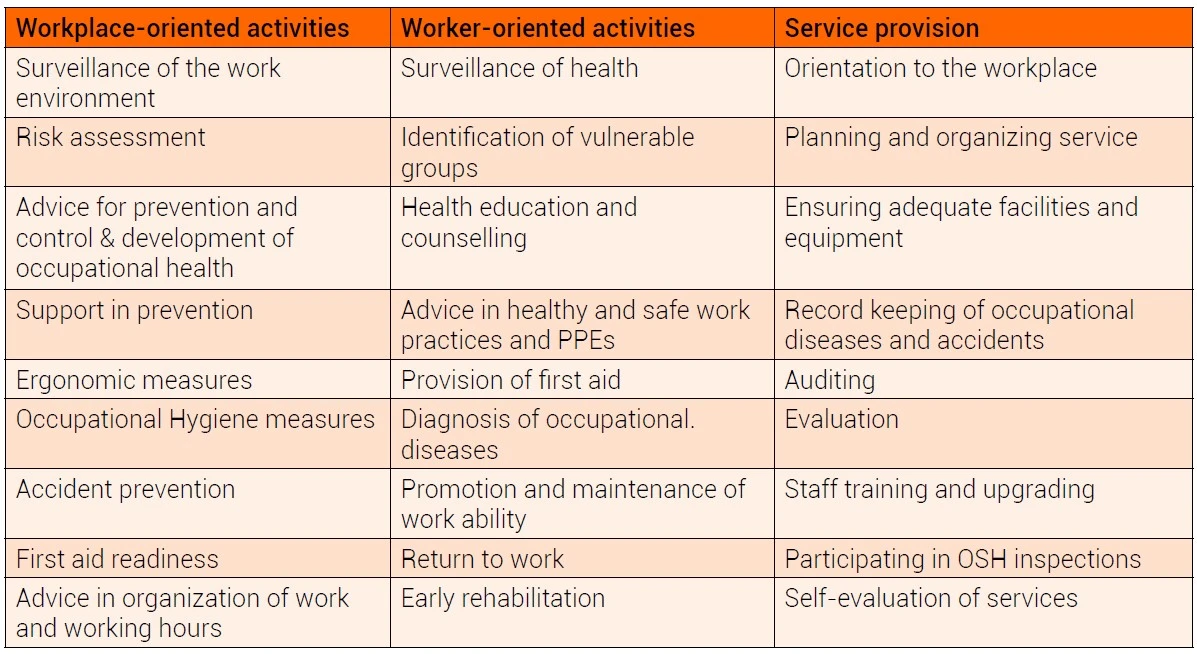
The content of comprehensive occupational health services
Surveillance in Occupational Health Services
Surveillance of the work environment and surveillance of workers’ health should be included in occupational health services.
Surveillance of the work environment gives information on the enterprise’s occupational health needs and determines the priorities for preventative and control actions.
The surveillance of the work environment should include the following: –
- Identifying and assessing environmental factors that could affect worker’s health.
- Assessment of hygienic conditions and organizational factors.
- Assessment of collective and personal protective equipment.
- Assessment of exposure to hazardous agents, using valid and generally accepted monitoring techniques.
- Assessment of control systems designed to eliminate or reduce exposure.
Injury Care in Occupational Health Services
The majority of occupational injuries are managed in a manner similar to that of daily life injuries.
There are many advantages to effective and appropriate intervention for work-related illnesses and injuries, including earlier return to work, less disruption of employees’ lives, more individualized case management, and reduced costs to employers and the economy.
Ideally, the objectives of the occupational health service should be:
- To allow workers to return to work as soon as it’s safe to do so after appropriate care.
- Provide a consistent and vigorous mechanism for performing fitness-to-work evaluations.
- Provide a prompt, effective, and efficient method of treating work-related injuries.
- Evaluate early intervention strategies for common conditions (such as soft tissue injuries).
- Demonstrate a management process for work-related injuries that emphasizes a positive, goal-oriented rehabilitation model of treatment that leads to an early return of the injured worker to gainful employment, whenever possible.
- Provide the opportunity for outcomes research as a method of demonstrating the efficacy of this approach toward the management of work-related injuries.
- Educate healthcare professionals on the best ways to manage injured workers’ care.
The functions of an occupational health service are: –
- Protect and promote the health of workers.
- Improve working conditions and the working environment.
- Maintain the health of the enterprise as a whole.
Surveillance of the work environment gives information on the enterprise’s occupational health needs and determines the priorities for preventative and control actions.
The surveillance of the work environment should include the following: –
- Identifying and assessing environmental factors that could affect worker’s health.
- Assessment of hygienic conditions and organizational factors.
- Assessment of collective and personal protective equipment.
- Assessment of exposure to hazardous agents, using valid and generally accepted monitoring techniques.
- Assessment of control systems designed to eliminate or reduce exposure.
There are many advantages to effective and appropriate intervention for work-related illnesses and injuries, including earlier return to work, less disruption of employees’ lives, more individualized case management, and reduced costs to employers and the economy.
To conclude, according to international organizations and the constitutions of most democratic states, access to occupational health services should be a basic right of working citizens.
References
Rantanen, J., & Fedotov, I. (1995). STANDARDS, PRINCIPLES AND APPROACHES IN OCCUPATIONAL HEALTH SERVICES. In Occupational Health (pp. 5–7). From International Labour Organization
Guidotti, T. L. (2011). Global occupational health. Oxford University Press.
Occupational Health and Safety, and Occupational Health Services Profile of Fiji. Suva: The Government of Fiji Islands.
Yusuf Saeed
Pharmacist | Medical Writer & Translator
Yusuf Saeed graduated from the Arab Academy for Science and Technology and Maritime Transport with a B.Sc. in Pharmaceutical Sciences. His passion for research and healthcare communication led him to specialize in medical writing and translation. Yusuf is committed to delivering accurate, well-researched content that empowers readers with reliable medical information and bridges language gaps in healthcare education.
As the founder of Medserene, Yusuf Saeed established the platform with a vision to provide trustworthy medical content and accessible healthcare information. His mission is to create a reliable resource that empowers readers to make informed decisions about their health and well-being. Driven by his passion for clear communication and healthcare education, Yusuf aims to bridge the gap between medical knowledge and everyday understanding.

